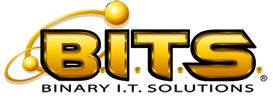- About BITS
- Services
- Local Report
- News
-
Support
- Directory Tools
- Training
- SEO Tools
- IT Tools
-
Web Tools
- FavIcon Generator
- Get Map Coordinates
- Auto Sitemap Tool
- Web Optimization
- Privacy Policy Generator
- Meta Tag Generator
- Robots.txt Generator
- Test Browsers
- Site Map Generator
- See Site Rank
- Email Registry
- Email Riddler
- DNS DomainKeys
- Live Chat Tool
- Website Spell Checker
- Free Spell Checker
- Request Reconsideration of Your Google Places Account or Listings
- Link Checker
- Font Awesome
- Google URL Remover
- Remote Access
- Contact Us
System Tray Doom
Does your system tray have more icons in it then you can identify? Have you ever tried to figure out what they all are or even if you need them? We offer some simple yet effective ways to find out what each icon is for and how to nuke the ones you really don’t need. In general, it’s time to take back your System Tray of doom!

The icons in your system tray are each associated with programs or processes on your pc that when loaded "assumed" they were the most important programs on your computer and absolutely, positively had to be loaded on startup because you couldn't live without them and were far too lazy to simply click on the appropriate program when you wanted to use it. However each of these ego maniacally placed programs exacts a price in exchange for making our lives simpler. They all require a certain amount of system resources to start up and keep themselves running. System resources that could be put to much better use elsewhere. (Like a graphics program or perhaps that new 3D card game you just downloaded from the Internet).
Whatever your reasons cleaning up the system tray will help free-up as many system resources on your pc as possible to help it run more efficiently with less crashing.
Let’s break the task into three parts: Identification, Categorization, and Removal.
Identification: What is each icon?
- Right click each icon and see if there is an associated menu
- If so then clicking on the “About” selection if it’s available should tell you what the program does.
- If so then clicking on the “About” selection if it’s available should tell you what the program does.
Categorization: Do I really need that program running at startup?
- Icons that correspond to antivirus programs, firewalls, and any other useful tasks you might have consciously loaded definitely need to stay in the task bar.
- Icons that correspond to AOL, Kazaa, Winzip, Music Match, Real Player, speaker volume, and other non-essential programs that can be fired-up elsewhere when needed are candidates for removal.
Removal: 3 methods to remove the program from pc startup.
- Beginner method: Look at the menu’s associated with each icon as stated in the “Identification” step above. Some programs offer an option to hide or remove the program from startup.
- Intermediate Method: At the command prompt type “MSCONFIG”. This brings up the System Configuration Utility. Go to the “Startup” tab and look at each Startup Item. It may help to expand the Command column to make it easier to see what process each item is associated with. Uncheck the items that aren’t essential or any item that has no description.
- Advanced method: At the command prompt type “REGEDIT”. This brings up the registry editor. Drill down to the following directory: “HKEY_LOCAL_MACHINE\SOFTWARE\Microsoft\Windows\CurrentVersion\Run
- Look in the right pane for programs that run at startup and delete any keys that aren’t essential.
Caution: Before attempting either of the last two methods please take extra care as some of the programs that are in the startup are necessary. I suggest you only use the last method if you still have icons in the System Tray and cannot find any way to identify or delete them using either of the first two methods. Be sure to only delete a program if you’re sure it doesn’t belong.
Service Spotlight
- Search Engine Optimization
SEO (Search Engine Optimization) Every time you turn around, there’s something new you have to know about on the internet. Think about it, there was a time when you knew every song on every album and what every make and model was driving down the street. Well, those days are OVER. But we are here to help you with the internet.
Las Vegas Web Design and Las Vegas Marketing Services can find ways of optimizing your site, finding valuable links, getting you added successfully to Local listing tools like Google, Yahoo, MSN and much more. We can tailor make a plan for as little as $99.00 per month guarenteed. This also includes the management of your Pay Per Click Advertisements.
